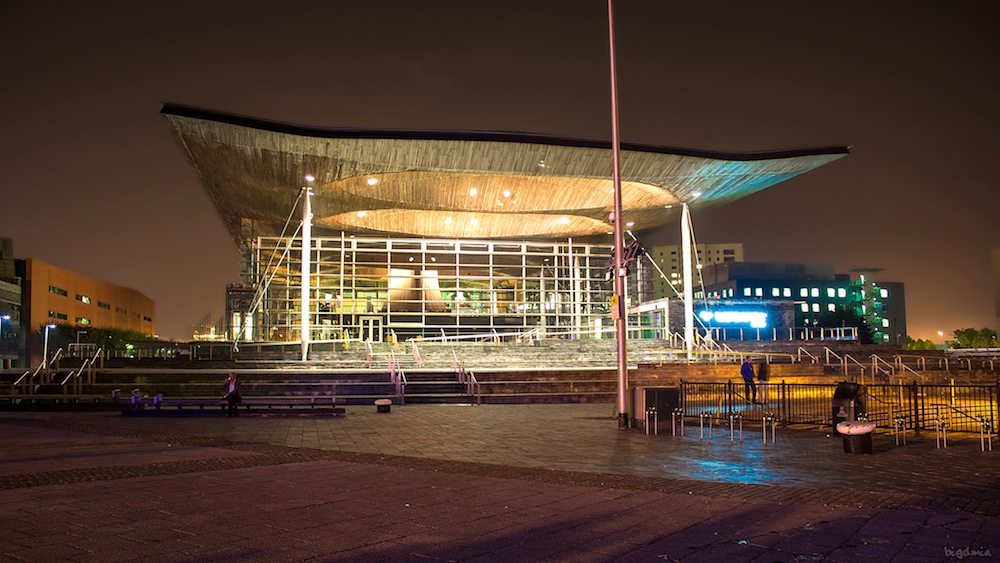The Urban Land Institute named architect Lord Richard Rogers the 2015 recipient of the J.C. Nichols Prize for Visionaries in Urban Development.
The award, the institute’s highest honor, recognizes individuals or groups that demonstrate a “longtime commitment to the creation of communities that reflect the highest standards of design and development," according to the trade group.
Rogers is the Founder of Rogers Stirk Harbour + Partners in London. He has been an architect and urban design adviser to public officials for 53 years. Rogers' portfolio includes more than 150 projects of varying types over his career, most of which are situated in London or other cities in Europe.
He is most known for Chiswick Park, Lloyd’s building and Millennium Dome in London, the National Assembly (or, the Senedd) for Wales in Cardiff, United Kingdom, and the Pompidou Centre in Paris. He also worked on the 3 World Trade Center in New York City, which will open in 2018.
"Richard's work, whether it is architecture or advocacy, shines a spotlight on the challenges that people in urban areas are facing and offers solutions that can be implemented," 2015 Nichols Prize Jury Chairman Marilyn Taylor said in a statement. "Living well in cities and extending that sense of wellness to everyone – those are the impacts that Richard is making with his words, his advocacy and his work. His impact is as much about how he has affected public policy as in the buildings he has built. Better ideas about housing, or about how public space meets a building – that's where Richard's contribution is."
Rogers will be awarded the $100,000 prize at the ULI Europe Conference in Paris in February.
Related Stories
Building Team | Feb 24, 2015
Call for entries: 2015 Giants 300 survey
The annual Giants 300 Report ranks the top AEC firms in commercial construction, by revenue.
Industrial Facilities | Feb 24, 2015
Starchitecture meets agriculture: OMA unveils design for Kentucky community farming facility
The $460 million Food Port project will define a new model for the relationship between consumer and producer.
University Buildings | Feb 23, 2015
Future-proofing educational institutions: 5 trends to consider
In response to rapidly changing conditions in K-12 and higher education, institutions and school districts should consider these five trends to ensure a productive, educated future.
Office Buildings | Feb 23, 2015
The importance of quiet and the consequences of distraction
Recent work style studies show that the average knowledge worker spends 25-35% of their time doing heads-down focused work. Once thrown off track, it can take some 23 minutes for a worker to return to the original task.
Modular Building | Feb 23, 2015
Edge construction: The future of modular
Can innovative project delivery methods, namely modular construction, bring down costs and offer a solution for housing in urban markets? FXFOWLE’s David Wallance discusses the possibilities for modular.
| Feb 23, 2015
6 trends changing the way city dwellers live
Across the cultural grid, from food to retail to transportation, America's urban areas are already undergoing a major metamorphosis. Here are the six major trends shaping our cities, from Fast Company.
Green | Feb 23, 2015
State of the green union, and the next big shift in sustainability
The history of the green movement offers cues that we are on the precipice of another significant shift in the green union.
| Feb 23, 2015
Where are the iconic green buildings?
What does a green building look like? How would you know one if you saw one? Maybe a trivial question to some, but of great interest to architects, designers, and other members of the Building Team as the rapid evolution of sustainable buildings continues apace.
Sports and Recreational Facilities | Feb 21, 2015
Pumped-up recreation centers help build body, mind, and spirit
Adopting facility layouts from Asian and European models, today’s sports and recreational buildings are becoming social hubs that accommodate a variety of community needs.
University Buildings | Feb 20, 2015
Penn strengthens campus security by reviving its surrounding neighborhood
In 1996, the University of Pennsylvania’s sprawling campus in Philadelphia was in the grip of an unprecedented crime wave. But instead of walling themselves off from their surrounding neighborhoods, the school decided to support the community.















